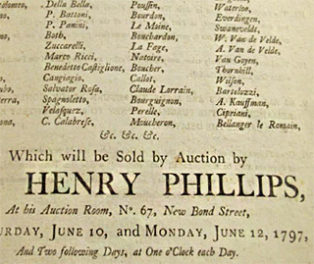You might have a hard time answering that question as you first stroll through the galleries of the exhibition The Spectacular Art of Jean-Léon Gérôme. But as you exit the hall featuring Gérôme’s later works, the answer lies before you in the exhibit’s final piece.

Optician\’s Sign, Jean-Léon Gérôme, 1902. Oil on canvas, 34 1/4 x 26 in. Private collection
The painting is a clear departure from the work that precedes it. In place of the landscapes that are rendered in almost photorealistic detail in Gérôme’s other works is a pair of disembodied eyes that float surreally in midair. And in place of the colorful merchants, dancers, and warriors who command your attention throughout the exhibit is a scruffy dog who observes your approach through a dapper monocle.
It’s a curious piece, and it drew me in. And in that, it achieved its purpose, because this painting wasn’t just a work of art; it was also a hardworking bit of advertising. Gérôme submitted this particular painting to a competition of advertising signs exhibited at the Hotel de Ville in Paris.
Here’s where the connection between Gérôme and the fictional Don Draper of the TV series Mad Men—whose fourth starts Sunday—comes in.
As someone who has worked in the ad industry for over a dozen years, it brought a smile to my face to recognize in Gérôme’s work some of the tried-and-true tricks of the trade. For example, there’s nothing like a cute puppy to draw you in. Any advertising creative team will tell you that if you want funny, cast a monkey; but if you want irresistible, you can’t go wrong with a dog. Or a baby. Or if you want irresistible plus funny, a talking dog or baby.
And any advertising copywriter will also admit that they can’t resist the occasional pun. Gérôme’s painting plays with the French word for optician (opticien), turning it into the pun “au petit chien” (“at the little dog”). These days, copywriters are generally warned away from relying on puns, but some of the most memorable and enduring slogans in ad history are 100% pun. Just think of how slogans like “When it rains, it pours” for Morton Salt and “Sometimes you feel like a nut” for Almond Joy have become ingrained into our collective consciousness.
In some ways it’s not surprising to see these early signs of the future of advertising in Gérôme’s work. Gérôme pioneered the mass reproduction of his work with a new photochemical process, leading some critics to level accusations of commercialism his way. But by anticipating a world where objects are created for mass entertainment and mass consumption (like advertising), perhaps Gérôme was more forward thinking than he got credit for.
Text of this post © Maria Smith. All rights reserved.




Comments on this post are now closed.
Trackbacks/Pingbacks